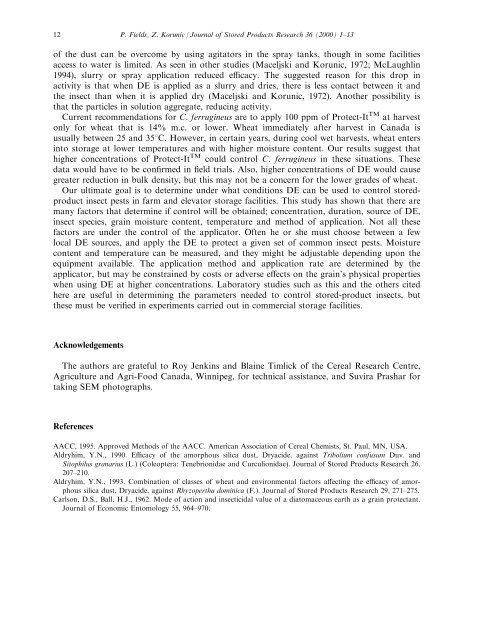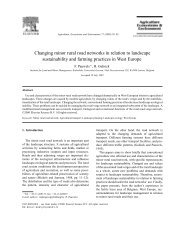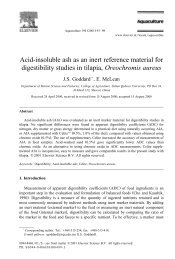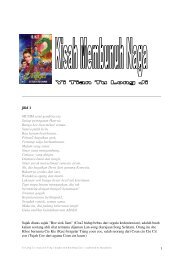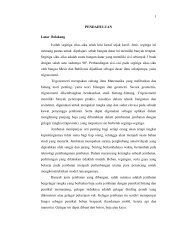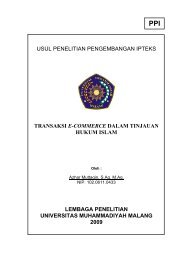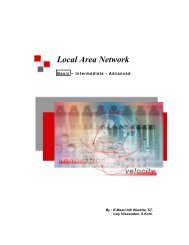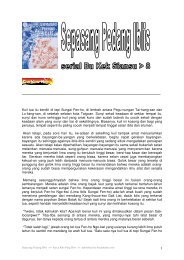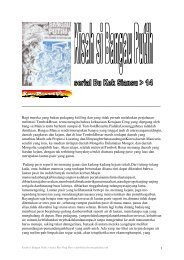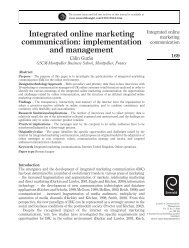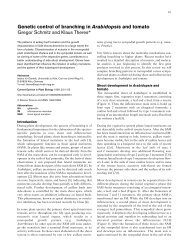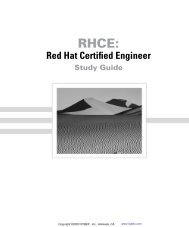The effect of grain moisture content and ... - Directory UMM
The effect of grain moisture content and ... - Directory UMM
The effect of grain moisture content and ... - Directory UMM
You also want an ePaper? Increase the reach of your titles
YUMPU automatically turns print PDFs into web optimized ePapers that Google loves.
12<br />
<strong>of</strong> the dust can be overcome by using agitators in the spray tanks, though in some facilities<br />
access to water is limited. As seen in other studies (Maceljski <strong>and</strong> Korunic, 1972; McLaughlin<br />
1994), slurry or spray application reduced e cacy. <strong>The</strong> suggested reason for this drop in<br />
activity is that when DE is applied as a slurry <strong>and</strong> dries, there is less contact between it <strong>and</strong><br />
the insect than when it is applied dry (Maceljski <strong>and</strong> Korunic, 1972). Another possibility is<br />
that the particles in solution aggregate, reducing activity.<br />
Current recommendations for C. ferrugineus are to apply 100 ppm <strong>of</strong> Protect-It TM at harvest<br />
only for wheat that is 14% m.c. or lower. Wheat immediately after harvest in Canada is<br />
usually between 25 <strong>and</strong> 358C. However, in certain years, during cool wet harvests, wheat enters<br />
into storage at lower temperatures <strong>and</strong> with higher <strong>moisture</strong> <strong>content</strong>. Our results suggest that<br />
higher concentrations <strong>of</strong> Protect-It TM could control C. ferrugineus in these situations. <strong>The</strong>se<br />
data would have to be con®rmed in ®eld trials. Also, higher concentrations <strong>of</strong> DE would cause<br />
greater reduction in bulk density, but this may not be a concern for the lower grades <strong>of</strong> wheat.<br />
Our ultimate goal is to determine under what conditions DE can be used to control storedproduct<br />
insect pests in farm <strong>and</strong> elevator storage facilities. This study has shown that there are<br />
many factors that determine if control will be obtained; concentration, duration, source <strong>of</strong> DE,<br />
insect species, <strong>grain</strong> <strong>moisture</strong> <strong>content</strong>, temperature <strong>and</strong> method <strong>of</strong> application. Not all these<br />
factors are under the control <strong>of</strong> the applicator. Often he or she must choose between a few<br />
local DE sources, <strong>and</strong> apply the DE to protect a given set <strong>of</strong> common insect pests. Moisture<br />
<strong>content</strong> <strong>and</strong> temperature can be measured, <strong>and</strong> they might be adjustable depending upon the<br />
equipment available. <strong>The</strong> application method <strong>and</strong> application rate are determined by the<br />
applicator, but may be constrained by costs or adverse e€ects on the <strong>grain</strong>'s physical properties<br />
when using DE at higher concentrations. Laboratory studies such as this <strong>and</strong> the others cited<br />
here are useful in determining the parameters needed to control stored-product insects, but<br />
these must be veri®ed in experiments carried out in commercial storage facilities.<br />
Acknowledgements<br />
<strong>The</strong> authors are grateful to Roy Jenkins <strong>and</strong> Blaine Timlick <strong>of</strong> the Cereal Research Centre,<br />
Agriculture <strong>and</strong> Agri-Food Canada, Winnipeg, for technical assistance, <strong>and</strong> Suvira Prashar for<br />
taking SEM photographs.<br />
References<br />
P. Fields, Z. Korunic / Journal <strong>of</strong> Stored Products Research 36 (2000) 1±13<br />
AACC, 1995. Approved Methods <strong>of</strong> the AACC. American Association <strong>of</strong> Cereal Chemists, St. Paul, MN, USA.<br />
Aldryhim, Y.N., 1990. E cacy <strong>of</strong> the amorphous silica dust, Dryacide, against Tribolium confusum Duv. <strong>and</strong><br />
Sitophilus granarius (L.) (Coleoptera: Tenebrionidae <strong>and</strong> Curculionidae). Journal <strong>of</strong> Stored Products Research 26,<br />
207±210.<br />
Aldryhim, Y.N., 1993. Combination <strong>of</strong> classes <strong>of</strong> wheat <strong>and</strong> environmental factors a€ecting the e cacy <strong>of</strong> amorphous<br />
silica dust, Dryacide, against Rhyzopertha dominica (F.). Journal <strong>of</strong> Stored Products Research 29, 271±275.<br />
Carlson, D.S., Ball, H.J., 1962. Mode <strong>of</strong> action <strong>and</strong> insecticidal value <strong>of</strong> a diatomaceous earth as a <strong>grain</strong> protectant.<br />
Journal <strong>of</strong> Economic Entomology 55, 964±970.


